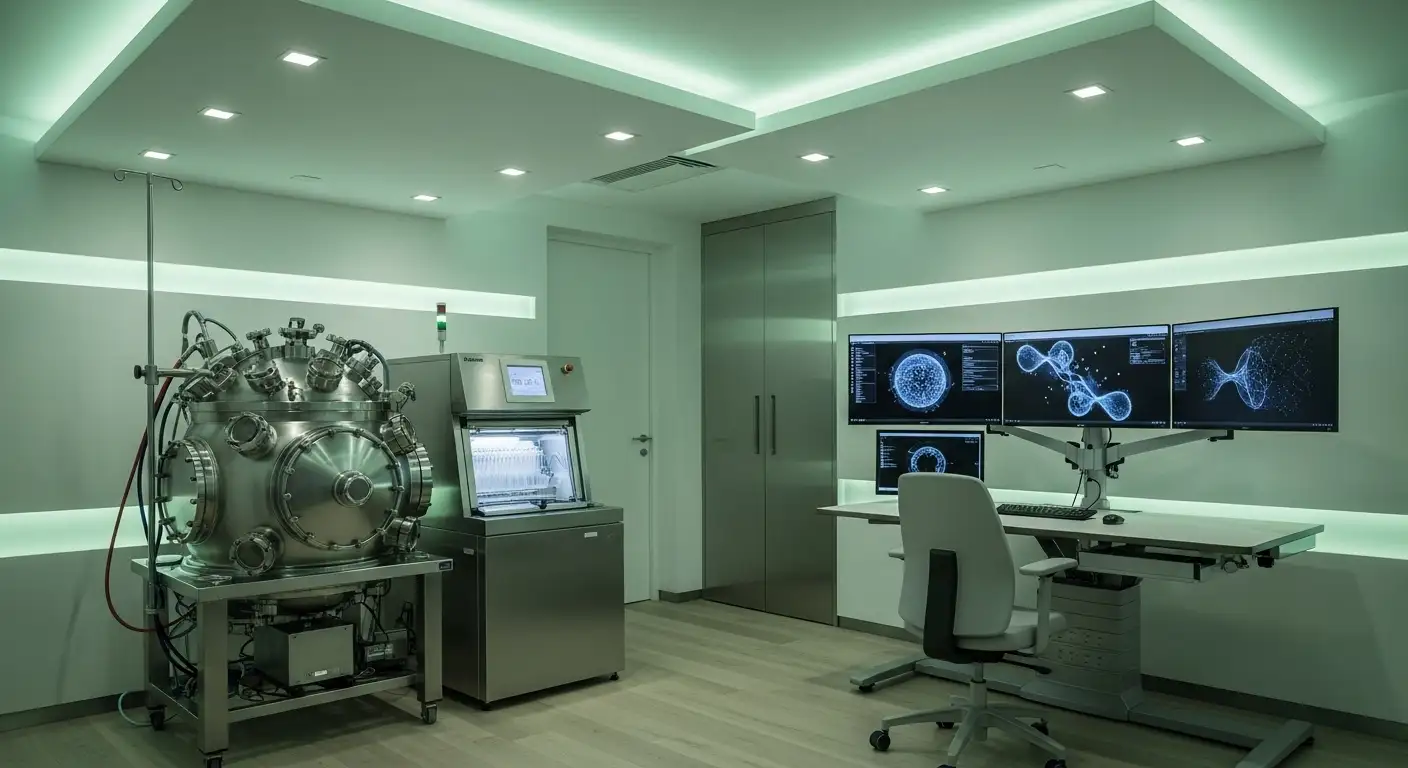Signs of successful implantation after transfer
Early Clues and Confirmations: Navigating Signs of Embryo Implantation Success

Understanding the Signs of a Successful Embryo Implantation
Embryo transfer is a pivotal step in IVF treatments, marking the beginning of potential pregnancy. While many women obsess over symptoms to gauge success, the reality is that early signs can be ambiguous or absent. Knowing what to watch for, and more importantly, understanding their limitations, can help manage expectations during this critical two-week period.
Early Physical Signs Post-Transfer
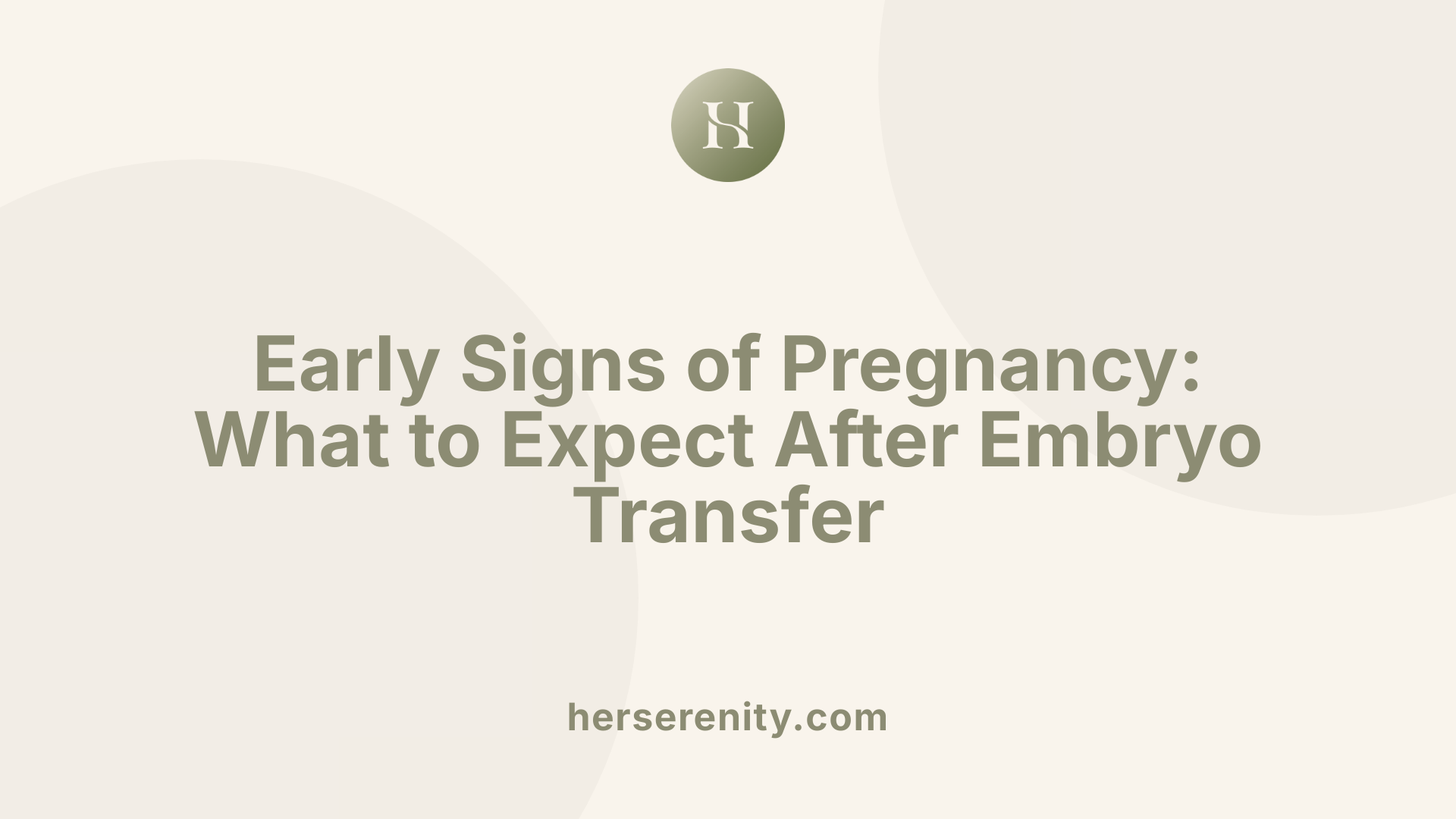
What are the early signs of successful embryo implantation after transfer?
Detecting pregnancy shortly after embryo transfer involves observing certain physical signs, though these can vary significantly among women. One of the earliest indicators may be light spotting or implantation bleeding, which typically appears about a week after the transfer. This spotting is usually light pink or brown and lasts a day or two, signaling where the embryo has attached to the uterine lining.
Accompanying this bleeding, many women experience mild cramping or pelvic discomfort similar to menstrual cramps. These sensations are caused by the embryo burrowing into the uterine wall and are considered positive signs of implantation.
In addition to bleeding and cramping, early symptoms such as breast tenderness, fatigue, mood swings, and increased urination often develop within 5 to 12 days post-transfer. These symptoms result from rising hormone levels, particularly hCG and progesterone, which support pregnancy.
Some women also notice nausea, headaches, sore nipples, and changes in vaginal discharge during this period. However, it’s important to remember that these signs are not definitive; many women do not experience noticeable symptoms during the first weeks.
The most reliable way to confirm pregnancy is through a blood test measuring hCG levels or an ultrasound conducted after approximately two weeks. It's essential to keep in mind that absence of symptoms does not imply failure, and the only sure confirmation comes from medical testing.
Timing and Progression of Symptoms During the Two-Week Wait
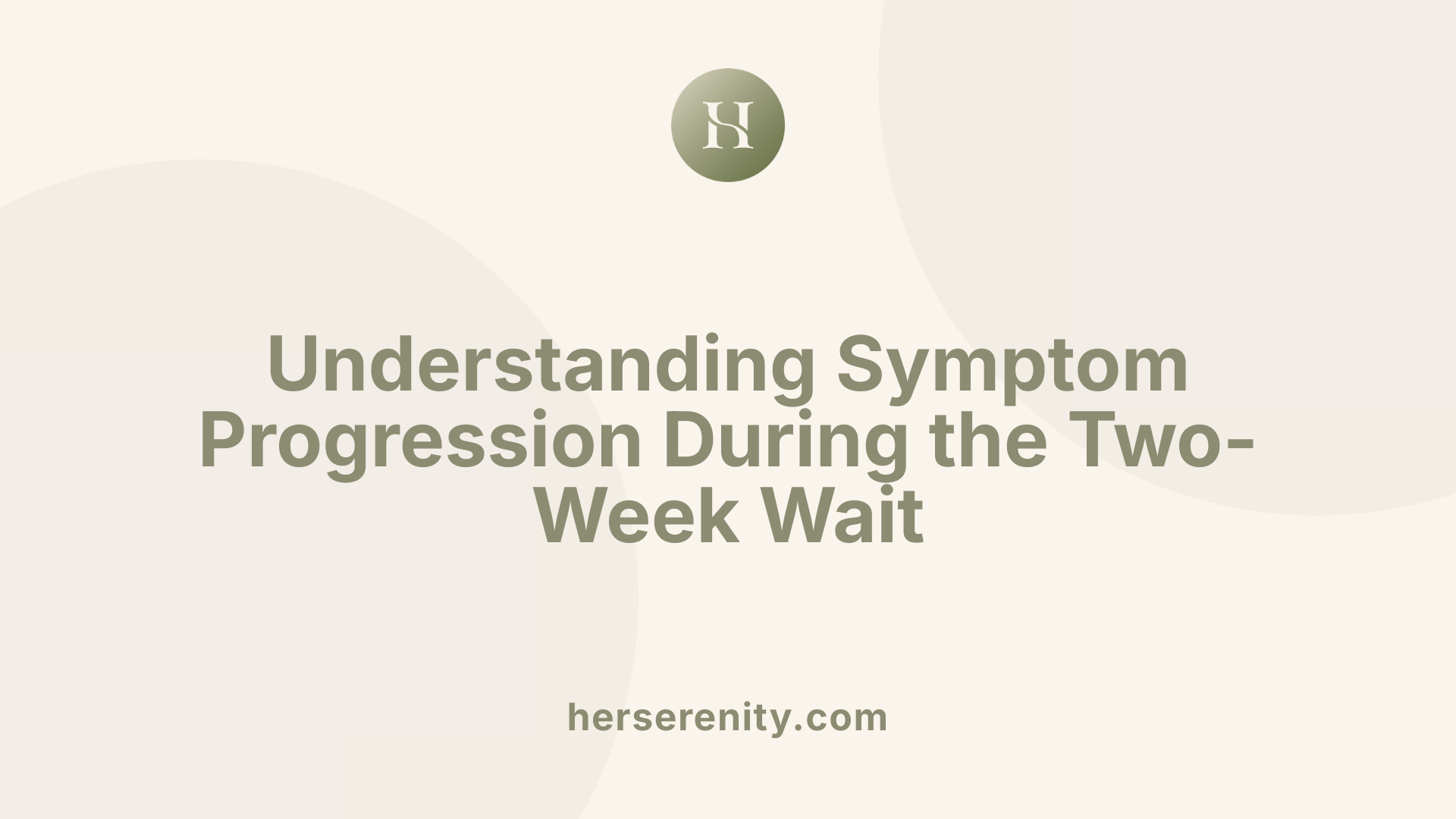 The two-week wait after embryo transfer can feel like an emotional rollercoaster, with many women wondering what signs might indicate pregnancy. Physically, this period is marked by a variety of symptoms that tend to develop gradually, influenced heavily by hormonal fluctuations.
The two-week wait after embryo transfer can feel like an emotional rollercoaster, with many women wondering what signs might indicate pregnancy. Physically, this period is marked by a variety of symptoms that tend to develop gradually, influenced heavily by hormonal fluctuations.
In the first few days following transfer, women might notice mild cramping, light spotting, or implantation bleeding—tiny signs that the embryo is beginning to attach to the uterine lining. These symptoms typically occur between 6 to 10 days after transfer. Some women also experience fatigue, breast tenderness, or changes in vaginal discharge during this time. However, it’s important to understand that not experiencing symptoms does not mean the transfer was unsuccessful. Many women feel no physical changes at all during this period.
Hormonal shifts, primarily the increase of human chorionic gonadotropin (hCG) once implantation occurs, influence physical sensations. As hCG levels rise, symptoms like nausea, increased urination, mood swings, or breast changes may begin around days 8 to 14. These signs are highly variable; some women might experience heightened symptoms, while others notice none.
Common symptoms vary widely, and their presence or absence does not guarantee pregnancy success. For example, some women report bloating or slight cramping, while others feel only mild fatigue. The timing of these symptoms can differ based on individual hormonal responses, the quality of embryo transfer, and overall health.
During this period, emotional reactions are also common, with feelings of hope, anxiety, or stress surfacing frequently. Self-care practices, including gentle activities, proper rest, and emotional support, are highly recommended to navigate this challenging wait.
Ultimately, the only definitive proof of pregnancy is a blood test measuring hCG, usually scheduled around 14 days post-transfer. While physical symptoms can offer clues, they are not reliable indicators on their own. Patience and kindness toward oneself are essential as you await confirmation.
| Timeline | Physical Signs | Hormonal Influence | Additional Notes |
|---|---|---|---|
| Days 1–4 | Mild cramping, slight spotting | Embryo implantation begins | Symptoms may be minimal or absent |
| Days 5–6 | Breast tenderness, increased urination | Rising progesterone levels | Symptoms deepen or become noticeable |
| Days 7–9 | Implantation bleeding, nausea, headaches | hCG increases | Signs vary among women |
| Days 10–12 | Fatigue, mood swings, mild cramping | Peak hCG levels | Some experience only subtle symptoms |
| Days 13–14 | Increased breast size, nausea, fatigue | Hormone levels peak | Confirmation via blood test recommended |
Understanding the typical progression of symptoms can help manage expectations during this waiting phase. Remember, every woman’s body reacts differently, and the absence of symptoms does not rule out pregnancy.
Common Signs of Implantation and Their Variability
How can I tell if my embryo transfer was successful?
Understanding whether an embryo transfer has resulted in pregnancy involves recognizing certain early signs, although these are not foolproof indicators. Light spotting or bleeding, occurring about a week after transfer, may signal implantation — the process when the embryo attaches to the uterine lining. Mild cramping and breast tenderness are also common and can indicate the embryo is settling in.
Other symptoms such as fatigue, increased urination, changes in vaginal discharge, mood swings, and mild nausea taken singly or combined may further suggest pregnancy. However, these symptoms are often misleading because they can also be caused by hormonal medications or the body’s response to the transfer procedure itself.
It's important to emphasize that many women experience no symptoms at all in the early weeks, yet still achieve pregnancy. The most reliable method of confirmation is a blood test measuring human chorionic gonadotropin (hCG), typically done two weeks after the transfer. Urine pregnancy tests provide an initial indication earlier but are less definitive.
Therefore, while observing mild symptoms can be encouraging, they should not be solely relied upon. Waiting for a proper medical test and consultation remains the best approach to confirming pregnancy status.
Implantation bleeding and cramping
Implantation bleeding appears as light pink or brownish discharge, usually lasting only a day or two. It's often accompanied by mild cramping similar to menstrual cramps, which signifies the embryo embedding into the uterine wall.
Early hormonal pregnancy symptoms
Signs like breast tenderness, fatigue, mood swings, and increased urination are related to hormonal shifts triggered by pregnancy hormones such as hCG and progesterone. These symptoms generally become more apparent as the embryo develops and hormone levels rise.
Difference between true signs and false alarms
Many symptoms that resemble early pregnancy signs — such as bloating, sore breasts, or slight cramping — can result from hormone medications or even the stress of the procedure. Consequently, self-diagnosing based solely on physical symptoms can be misleading.
Accurate confirmation always comes from medical testing rather than symptom observation, which underscores the importance of scheduled blood tests post-transfer.
| Symptom | Typical Timing | Cause | Reliability as Pregnancy Indicator |
|---|---|---|---|
| Implantation bleeding | 6-10 days post-transfer | Embryo attaching to uterine lining | Light and short duration, not definitive |
| Mild cramping | 1-10 days post-transfer | Embryo implantation or meds | Common, but non-specific |
| Breast tenderness | About 7 days onwards | Hormonal changes | Early sign but can also be due to medication |
| Fatigue | 1-14 days post-transfer | Rising progesterone or pregnancy hormones | Common, not conclusive |
| Increased urination | 7-14 days post-transfer | Elevated hCG and progesterone | Early pregnancy symptom, non-specific |
Understanding these signs enables better preparedness, but patience and confirmatory testing remain the gold standards in pregnancy detection.
Understanding False Signs and Misconceptions
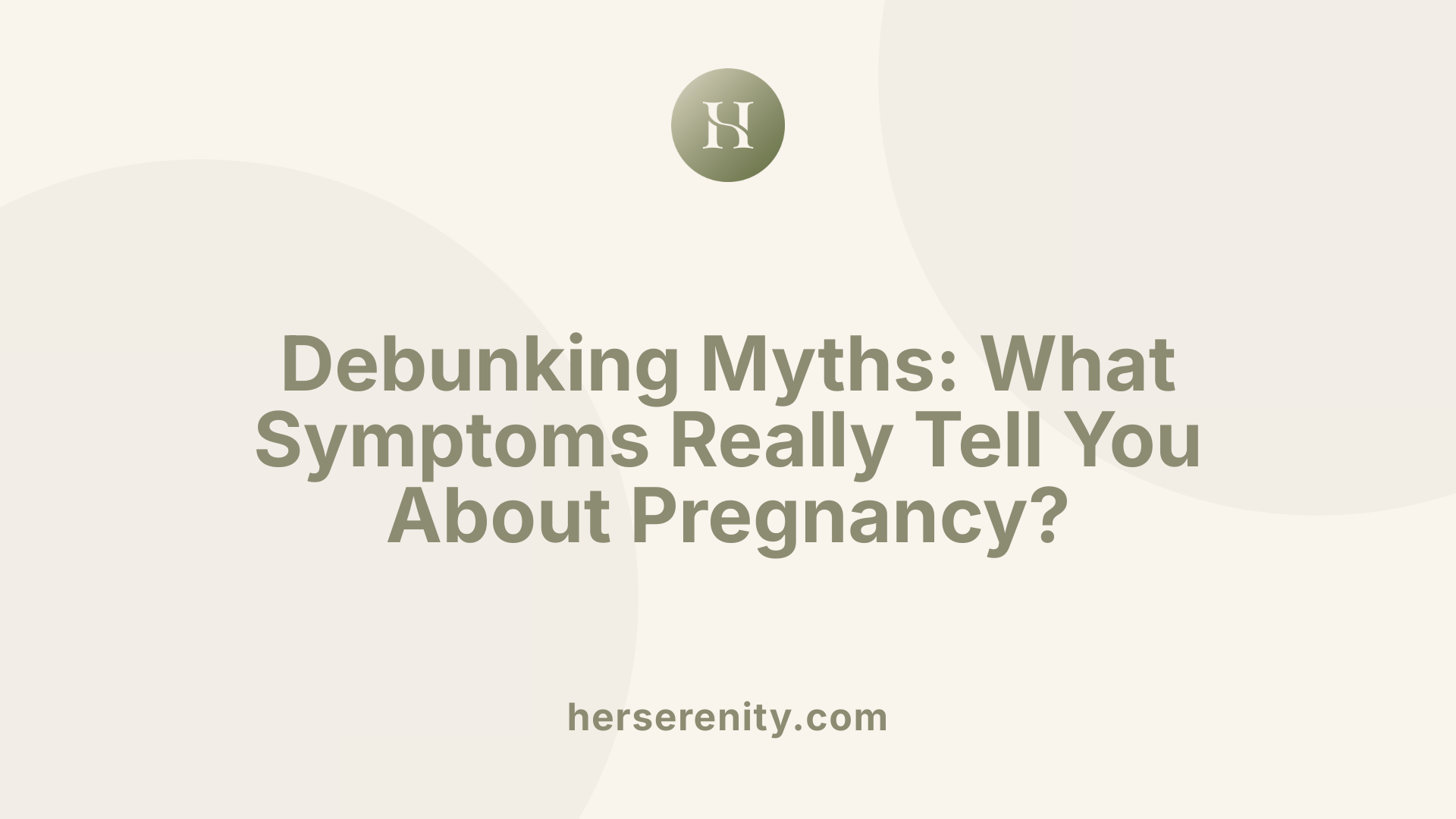 Many women face confusion about pregnancy symptoms following embryo transfer, often due to misconceptions or misleading signs. A common false belief is that experiencing symptoms such as cramping, nausea, or fatigue immediately after transfer guarantees pregnancy. However, these symptoms are frequently related to hormone medications used during treatment—like progesterone supplements—or normal bodily responses to the procedure itself.
Many women face confusion about pregnancy symptoms following embryo transfer, often due to misconceptions or misleading signs. A common false belief is that experiencing symptoms such as cramping, nausea, or fatigue immediately after transfer guarantees pregnancy. However, these symptoms are frequently related to hormone medications used during treatment—like progesterone supplements—or normal bodily responses to the procedure itself.
Hormonal medications can cause a range of symptoms that mimic early pregnancy signs, including breast tenderness, mood swings, and bloating. These are side effects of the treatment rather than indicators of pregnancy success. This can lead to false reassurance or unnecessary anxiety if women interpret these signs as confirmation.
It's important to rely on more dependable methods for confirming pregnancy. The most accurate way is a blood test measuring human chorionic gonadotropin (hCG), typically performed around 13-15 days after embryo transfer. Symptoms alone are unreliable; many women, up to 15%, may not experience noticeable signs during early pregnancy yet still be pregnant.
Understanding these facts can help manage expectations and reduce emotional stress during the two-week wait. Remember, patience and proper testing are essential for accurate pregnancy confirmation.
For more detailed insights into misconceptions about post-transfer symptoms, searching "False signs and misconceptions post-transfer" can provide additional information.
Signs of Implantation Success and Their Typical Timeline
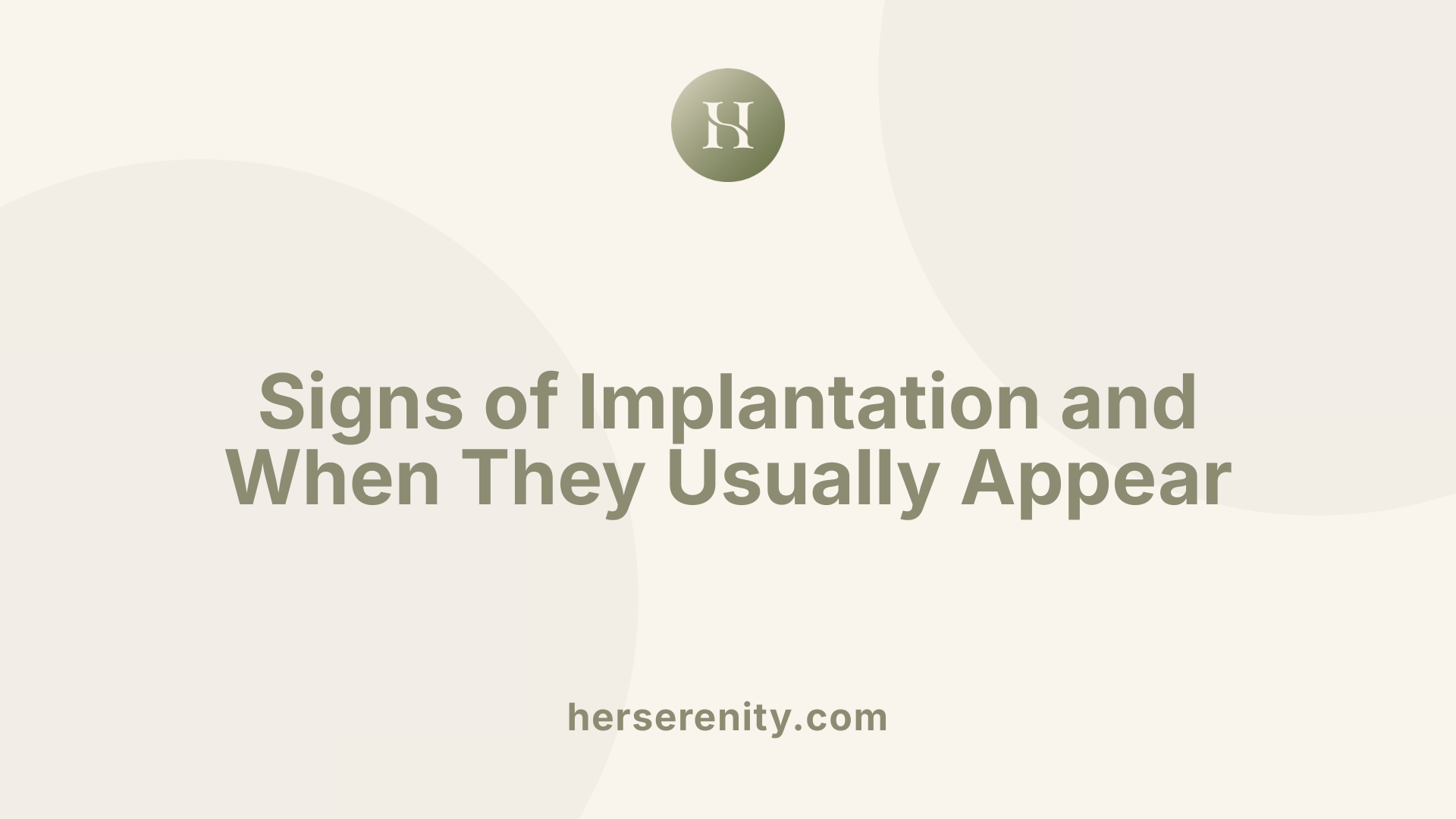
How soon can I expect to see signs of implantation success?
Signs of implantation success generally begin to show between 6 to 9 days following embryo transfer. During this period, many women notice light spotting, often referred to as implantation bleeding, which typically occurs around days 7 to 9 post-transfer. Alongside bleeding, early symptoms such as mild cramping, breast tenderness, fatigue, and mood swings might appear. These symptoms stem from hormonal fluctuations triggered by the embryo attaching to the uterine lining.
While these signs can be encouraging, it’s essential to understand that they are not conclusive proof of pregnancy. Many women experience similar symptoms without pregnancy, and some may not experience any symptoms at all.
The most dependable method to confirm that implantation has occurred is through a blood test measuring hCG levels. This test is usually scheduled around 10 to 14 days after embryo transfer. Positive results from this test can affirm a successful implantation and early pregnancy.
In summary, while some women may observe initial hints of pregnancy within a week after transfer, the definitive confirmation depends on blood tests and ultrasound assessments. Recognizing symptoms early can be reassuring, but medical testing remains the gold standard for confirmation.
The Definitive Confirmation of Pregnancy
When trying to confirm pregnancy after embryo transfer, the most reliable method is a blood test measuring human chorionic gonadotropin (hCG). This hormone is produced once the embryo successfully attaches to the uterine lining, usually about 24 hours after implantation. Typically, healthcare providers recommend waiting approximately 12 to 14 days after the transfer before taking a blood test. This waiting period allows hCG levels to rise sufficiently for detection, minimizing the risk of false negatives.
Ultrasounds are generally not useful in early pregnancy detection; most clinicians schedule an ultrasound around 6 to 7 weeks of pregnancy to confirm fetal heartbeat and development. Therefore, early ultrasounds primarily serve to monitor ongoing pregnancy rather than confirm initial conception.
Distinguishing between early pregnancy symptoms and confirmation relies on medical testing. Symptoms like fatigue, breast tenderness, and spotting can occur in early pregnancy but are not definitive. The only sure way to confirm pregnancy success is through a positive blood test followed by ultrasound. This two-step confirmation ensures accurate results and helps rule out early pregnancy loss or other issues.
| Timing of Confirmatory Tests | Typical Method | Description | Note |
|---|---|---|---|
| 9-14 days post-transfer | Blood hCG test | Measures pregnancy hormone | Most reliable for confirmation |
| Around 6-7 weeks | Ultrasound | Visualizes fetal heartbeat | Confirms fetal development |
While early home pregnancy tests are available, they may not detect hCG at low levels shortly after embryo transfer, making clinical blood tests the preferred approach for definitive confirmation. Listening to your healthcare provider's advice and scheduling testing at the appropriate time maximize the chances of an accurate result.
The Emotional and Psychological Aspects of the Waiting Period
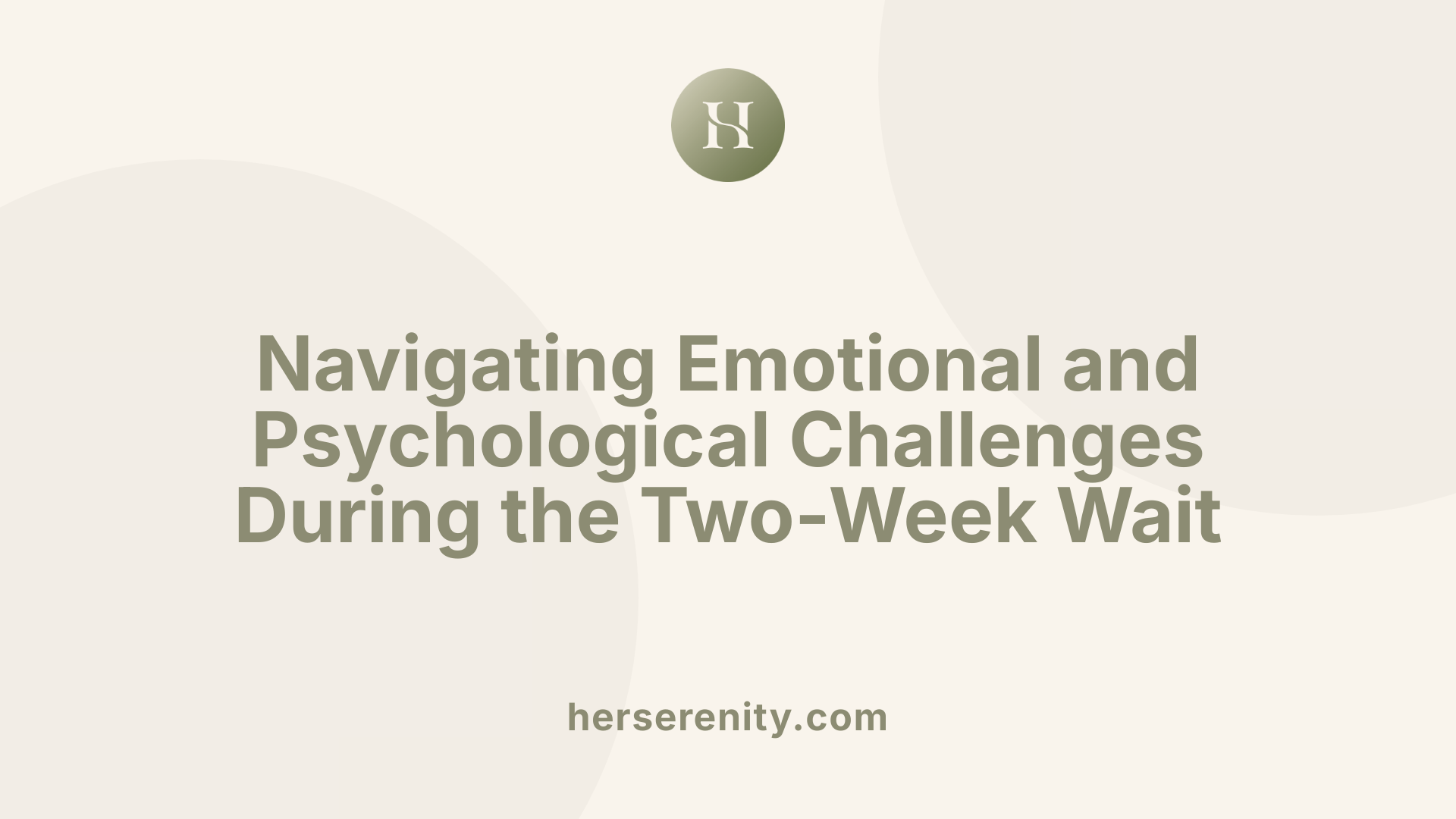
How can I tell if my embryo transfer was successful?
One of the most challenging parts of fertility treatment is the waiting period, which can last up to two weeks after embryo transfer. During this time, many women look for signs or symptoms that might indicate success.
Early signs of pregnancy can include light spotting or light bleeding, which may be a sign of implantation. Other symptoms such as mild cramping, breast tenderness, increased urination, fatigue, and changes in vaginal discharge can also occur as the hormone levels change and support early pregnancy.
However, it is important to remember that these symptoms are not definitive proof of pregnancy. Many women may experience none of these symptoms or may have side effects from hormone medications that mimic pregnancy signs. Conversely, some women might notice symptoms but still not be pregnant.
The most reliable way to confirm if the embryo transfer was successful is to undergo a blood pregnancy test, usually about 13-15 days after transfer. This test checks for the presence of human chorionic gonadotropin (hCG), the hormone produced during pregnancy.
In summary, while early symptoms can provide some hope and reassurance, they are not conclusive. Waiting patiently and trusting the testing process offers the most accurate answer. Remember, every woman’s experience is unique, and absence of symptoms does not mean the treatment was unsuccessful.
Additional insights
The post-transfer two-week wait can be emotionally taxing. Many women experience a rollercoaster of feelings, from hope to anxiety. Support from loved ones and healthcare professionals can be essential during this time.
Managing expectations and engaging in self-care practices can help reduce stress. It’s beneficial to stay occupied with activities, maintain a healthy lifestyle, and practice relaxation techniques.
For those curious about the emotional journey, searching for resources and connecting with others undergoing similar experiences can provide comfort and understanding. The phrase "emotional aspects during two-week wait" is a common search for many women seeking guidance and reassurance in these uncertain days.
Patience and Accurate Testing for Peace of Mind
While early physical signs and symptoms can provide hope and some guidance during the two-week wait, they are not definitive indicators of pregnancy success. Understanding that many women experience no symptoms, and that hormonal medications can mimic pregnancy signs, is crucial. The most reliable confirmation of successful embryo implantation and pregnancy remains a blood test measuring hCG levels, typically conducted around two weeks post-transfer. Maintaining patience, practicing self-care, and avoiding unnecessary stress are vital during this emotionally demanding period. Ultimately, trusting in evidence-based testing ensures accurate results and peace of mind, whether the outcome is positive or not. Regardless of the physical signs, support from loved ones and medical professionals can help navigate this challenging phase with confidence and hope.
References
- What Happens After Embryo Transfer: Day-by-Day Symptoms
- Signs Your Embryo Transfer May Have Been Successful - Healthline
- Positive Signs After an Embryo Transfer - ELITE IVF
- What to Expect After Your IVF Frozen Embryo Transfer
- 10 Positive Signs After Embryo Transfer - Alife Health
- 11 Positive Signs After Embryo Transfer - AIVF
- How to survive the IVF Two-Week Wait - The Evewell
- After Embryo Transfer Day By Day Symptoms | Pride IVF
- Understanding Implantation After IVF I TRIO Fertility
- Recognizing Early Pregnancy Symptoms after IVF



